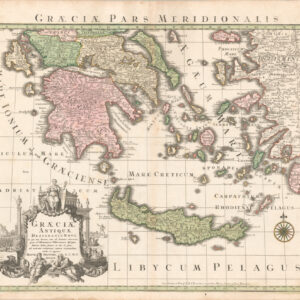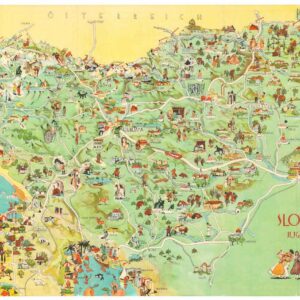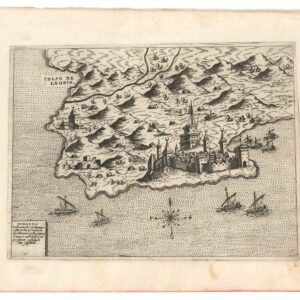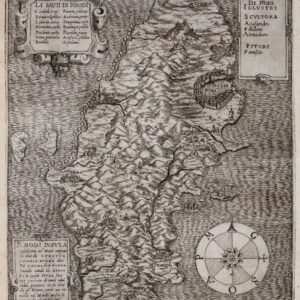The first modern map of Montenegro.
[Montenegro] КАРТА ЦРНЕГОРЕ | قرطاغ مملكت خريط | Carte du Pays de Montenegro dressée d’après des opérations géodétiques sur les lieux et recherches les plus soigneuses.
Out of stock
Description
This impressive map by Hungarian cartographer Count Fedor von Karacsay represented a significant leap in mapping the interior of Montenegro and became the basis for subsequent maps of the country throughout the 19th century. The example offered here is a first edition, engraved by Pietro Allodi and published in 1838 (a second edition was published in 1854).
The map is an important document for the cartographic history of the Balkans. Karacsay was a garrison commander stationed at Kotor, and eventually befriended Montenegrin Prince-Bishop Petar Petrović-Njegoš. These circumstances afforded Karacsay access to unpublished sources and local knowledge far beyond the reach of contemporary European mapmakers. Karacsay has centered his map on the Prince-Bishopric of Montenegro, then an autonomous region of the Ottoman Empire. But the scope of the map extends north into present-day Croatia (including Dubrovnik), east into present-day Kosovo, and south into present-day Albania (including Shkodër).
A particularly interesting feature of this map is that the title is displayed in three languages — Serbo-Montenegrin, Ottoman Turkish, French — giving it an added layer of sophistication and suggesting that it was intended for both an international and local audience. French, the common language of letters at this time, has been used for the rest of the map, including its legend and a table of statistics. The only exceptions are a few Ottoman labels marking borderlands at the eastern fringes of Montenegro. The geography of the map offers a detailed picture of the situation of cities and towns, the roads that connect them, and the hills and mountains that divide them. Forts, convents, and churches are also plotted.
Cartographer(s):
Condition Description
Segmented and laid on linen, with original slipcase.
References



